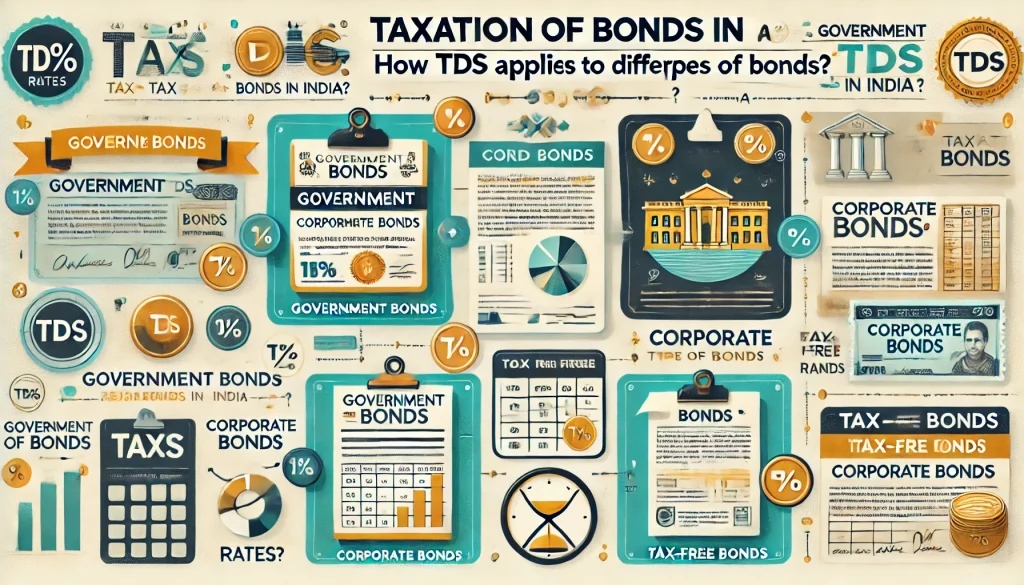
With an aim to raise capital for green infrastructure projects, the finance minister announced in the February 2022 Budget that the government will be issuing sovereign green bonds. These securities will help finance renewable energy projects, which will facilitate India’s transition to clean energy and achieve its goals of net-zero carbon emissions by 2070.
If you are interested in buying this debt instrument, keep reading this blog. We will cover several aspects of sovereign green bonds, helping you make an informed investment decision.
What is a Sovereign Green Bond?
A sovereign green bond is a debt instrument which governments issue in order to raise capital for projects related to the climate or environment. They include constructing green buildings, renewable energy infrastructure, developing sustainable transportation systems and more.
Sovereign green bonds were first issued by the World Bank in 2008. Since then, these fixed-income securities have gained massive popularity worldwide among investors, providing them an opportunity to reap profitable returns while playing an active role in environmental sustainability.
Green Bonds vs Standard Bonds
Now, in comparison to standard bonds, sovereign green bonds differ in certain aspects. They are as follows:
| Sovereign Green Bonds | Standard Bonds |
| The funds generated from sovereign green bonds can only be used for environmental projects. | In case of standard bonds, the issuer can utilise the funds for several purposes. |
| Issuers have to provide all the details of their projects and their anticipated impact on the climate and environment. | Standard bond issuers do not have such obligations. |
How Will the Sovereign Green Bonds Benefit the Indian Economy?
Investing in RBI sovereign green bonds can benefit the Indian economy in several ways:
- Create a sustainable government borrowing program for financing India’s green infrastructure projects.
- Increase the country’s renewable energy production capacity to 500 GW by 2030.
- Reduce India’s dependence on fossil fuel imports.
- Curtail the country’s carbon emissions by 1 billion tonnes by 2030.
- Electrification of India’s transportation system thus making it more sustainable and environment friendly.
- Reducing the nation’s carbon intensity by 45% by 2030 over its 2005 levels.
- Enhancing the local market’s growth by providing liquidity and benchmark pricing.
- Foreign investors usually look for green investments. Thus, sovereign green bonds can improve capital inflows and effectively reduce the cost of raising capital.
How to Buy Green Bonds in India?
You can buy sovereign green bonds via the RBI retail direct website or your brokerage account in case it is made available by your broker. Here are the steps that you can follow to buy sovereign green bonds using both the ways:
1. RBI Retail Direct Website
- Step 1 – Navigate to the RBI retail direct website.
- Step 2 – Log in to your account.
- Step 3 – Select Sovereign Green Bonds
- Step 4 – Enter all the relevant details.
- Step 5 – Make your payment.
2. Brokerage Account
- Step 1 – Log in to your trading account.
- Step 2 – Check the dashboard for current and upcoming sovereign green bond issues.
- Step 3 – Look up details like issue size, bidding date, bid value, price per security, etc.
- Step 4 – Place a bid by entering the price per security and investment value.
- Step 5 – Complete your payment and view the status of your bid.
Sovereign Green Bonds Framework of India
The Indian Government follows a certain framework while issuing green sovereign bonds. It follows the Panchamrit pledges which the nation made during the Conference of Parties (COP26) in November 2021, Glasgow.
By following this framework, the nation also shows its adherence towards the Nationally Determined Contribution (NDC) targets that were set as per the Paris Agreement. The Green Finance Working Committee (GFWC) was also established by the Ministry of Finance to approve important choices regarding the issuing of sovereign green bonds.
As per the government, the proceeds from green bonds will be used for projects with the following objectives:
- Reducing greenhouse gas and carbon emissions.
- Encouraging energy efficiency.
- Improving biodiversity and natural ecosystems keeping sustainable development goals in view.
- Promoting climate adaptation and resilience.
Now, this framework usually caters to projects that include:
- Hydro energy
- Solar energy
- Biomass
- Wind energy
- Urban mass transportation
- Pollution prevention and control
- Green buildings
Additionally, certain types of projects have been kept out of the framework. They are as follows:
- Nuclear power generation
- Renewable energy projects based on biomass that depend upon feedstock which is sourced from protected areas.
- Direct waste incineration
- All fossil fuel based projects
This framework limits the eligible expenditure for green projects to the government’s spending within 12 months before the sovereign green bonds are issued. Moreover:
- The authorities must allocate proceeds from the green bonds to green projects within 24 hours of issue.
- In case an eligible green project gets cancelled or postponed, the government needs to replace it with another eligible green project.
Benefits of Sovereign Green Bonds
Here are some of the benefits of investing in sovereign green bonds:
- Direct investment opportunities to convert brown industries to green industries.
- Enhanced transparency and accountability regarding income use and management by companies, leading to the formation of new risk-management instruments.
- Financial gains along with contributing to environmental protection and well-being.
Disadvantages of Sovereign Green Bonds
Just like any other security, sovereign green bonds also have their fair share of cons. They are as follows:
- Maintaining adequate liquidity and facilitating trades for sovereign green bonds can be a major issue for the Reserve Bank of India.
- Investors may be reluctant to buy these bonds if their credit ratings are below AAA or AA.
- Macroeconomic factors like political factors, market trends, inflation, etc. may hamper investors’s returns.
Conclusion
Given the rising prevalence of green initiatives across every industrial sector, sovereign green bonds can be an excellent way for investors to gain from this major market shift. However, given that bonds usually come with a long maturity period and fixed rate of interest, you must assess your risk appetite before investing.
FAQs
The Reserve Bank of India is the only bank in India which offers sovereign green bonds. You can purchase them by visiting the RBI retail direct website.
In India, the government issues sovereign green bonds to raise funds for green infrastructure projects like renewable energy, mass transportation, pollution control etc.
According to government sources, as of now, sovereign green bonds will not come with any tax concessions or incentives.


